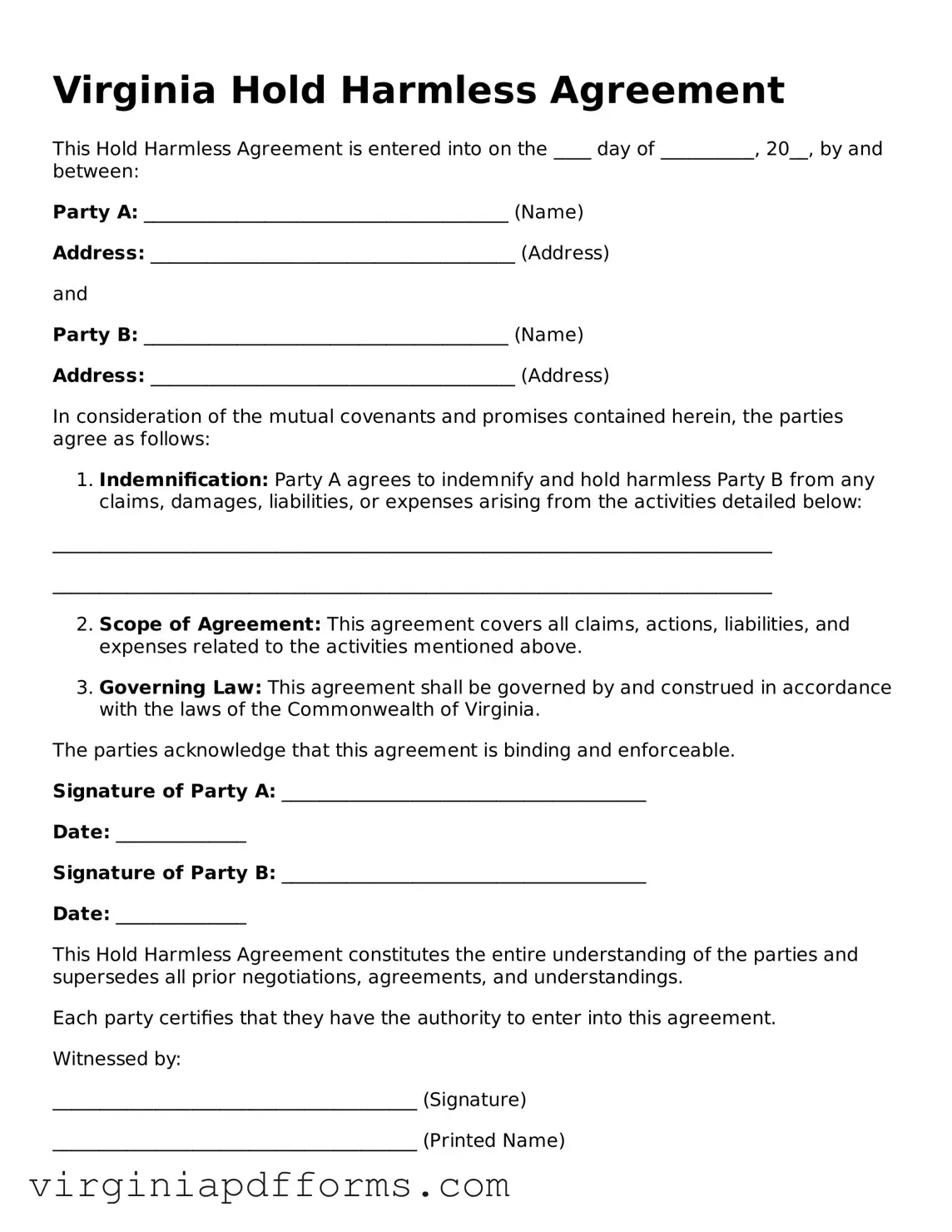Attorney-Approved Virginia Hold Harmless Agreement Document
The Virginia Hold Harmless Agreement is a legal document that protects one party from liability for any injuries or damages that may occur during a specific activity or event. By signing this agreement, individuals or organizations agree not to hold each other responsible for certain risks associated with their participation. This form is commonly used in various situations, including events, construction projects, and recreational activities.
Access My Document Now
